Are you a Quiet Speculation member?
If not, now is a perfect time to join up! Our powerful tools, breaking-news analysis, and exclusive Discord channel will make sure you stay up to date and ahead of the curve.
Sometimes, innovation takes time. Endless nights of preparation, countless hours of practice, hundreds of games contributing to spreadsheets of statistics that inform close, calculated changes. In Magic (and Modern especially), this is the most common form of innovation we see. Death’s Shadow Zoo lists tend to fall in one of two camps, but within those camps, most players are playing almost the exact list, all the way down to the sideboard Forest. While universally maligned as “netdecking” by old couch-potato Magic players from a bygone era, the fact remains that the groupthink culture of Magic is potent. When hundreds of other players are contributing to the massive spreadsheet of data with you, reaching the “optimal list” comes about that much faster.
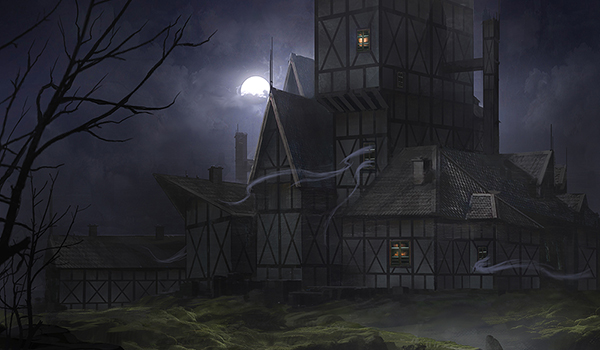
There is another form of innovation, however. It comes in the black of night, cutting through the darkness like a bolt of lightning (or perhaps a Lightning Bolt). When it hits, the resulting blindness sponsors questions of disbelief. “How did I not notice this before?” “What did they see that I overlooked?” “What does it mean to ‘kill em’ with the shoulders?” This past week, on my Twitch stream, innovation struck. Behold the new face of Modern. I give you UW Blink.
[wp_ad_camp_1]
UW Blink, by Trevor Holmes (5-0, Modern League)
With this list, I went 11-3 last Monday and Tuesday, including a 5-0 performance in a Competitive Modern League. We’ll start by discussing Spell Queller in general, and then we’ll move on to talking specifically about my list and my thoughts behind it.
Spell Queller
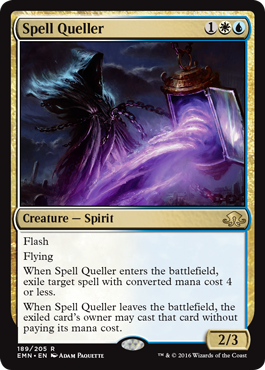 Spell Queller in Modern is reality, plain and simple. I haven’t been paying attention to what people are saying about it for Standard, but a quick five-game league with a rough list was all it took to convince me (and my five opponents). I’ll admit, at first, I was skeptical of how often a 2/3 for three would survive in a Lightning Bolt format, but I quickly came around to it’s power. While today it is me, we all shall fall. You might be skeptical too, and I get that. We’re ahead of the curve, and Eldritch Moon released online just a week ago. Trust me when I say that while this Spell Queller deck is the first, it won’t be last. The bandwagon hasn’t even left the driveway yet, but you have a chance to ride shotgun.
Spell Queller in Modern is reality, plain and simple. I haven’t been paying attention to what people are saying about it for Standard, but a quick five-game league with a rough list was all it took to convince me (and my five opponents). I’ll admit, at first, I was skeptical of how often a 2/3 for three would survive in a Lightning Bolt format, but I quickly came around to it’s power. While today it is me, we all shall fall. You might be skeptical too, and I get that. We’re ahead of the curve, and Eldritch Moon released online just a week ago. Trust me when I say that while this Spell Queller deck is the first, it won’t be last. The bandwagon hasn’t even left the driveway yet, but you have a chance to ride shotgun.
To start, we’ll evaluate it on rate first, followed by synergy, and lastly we’ll look at positioning. In this way, hopefully we’ll gain a closer understanding of not only how good Spell Queller is/isn’t, but why/why not it is that way.
As a 2/3 flash flying creature for three, Spell Queller isn’t turning any heads on stats alone. Flying is nice, and flash plays well in blue-white colors, but dying to Lightning Bolt is a pretty big strike against it. It blocks Goblin Guide, and can eat a Signal Pest, Snapcaster Mage, or Dark Confidant, but beyond that we’re not excited about what Spell Queller is doing inside the declare blockers step. Flying definitely gives it a step up, however, as trading with Delver of Secrets or flying over a Tarmogoyf to hit Liliana of the Veil gives us a lot of play with the card.
Still, if the ability is worthless, this card is not seeing play, which means the ability has to be consistently powerful for us to want to play this card. This distinction is important to make, as too often we can be blindsided by focusing on “best-case” scenarios rather than the statistical average. Think Tireless Tracker in Jund, or, to a lesser extent Master of Etherium in Affinity. Sure, some of the times they are doing great things, but (in my experience) they are often underwhelming or not worth the cost (real or opportunity) that we are paying for them.
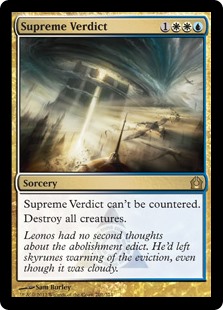 So, the ability. In a format where four-mana spells win the game, Spell Queller eats everything. Removal spells, threats, counterspells, combo pieces, you name it. Liliana of the Veil out of Jund. Cranial Plating out of Affinity. Scapeshift out of Scapeshift. Voice of Resurgence. Thought-Knot Seer. Tarmogoyf. Goblin Guide. Spell Queller is actual Cancel, but instead of being a three mana clunky answer-all it comes attached to a 2/3 flash flyer.
So, the ability. In a format where four-mana spells win the game, Spell Queller eats everything. Removal spells, threats, counterspells, combo pieces, you name it. Liliana of the Veil out of Jund. Cranial Plating out of Affinity. Scapeshift out of Scapeshift. Voice of Resurgence. Thought-Knot Seer. Tarmogoyf. Goblin Guide. Spell Queller is actual Cancel, but instead of being a three mana clunky answer-all it comes attached to a 2/3 flash flyer.
Also, and most importantly, we’re exiling spells, and not countering them. This means we get to eat Supreme Verdict or Abrupt Decay. Thought-Knot Seer off of a Cavern of Souls. Cards cast off a Boseiju, Who Shelters All. The Cavern of Souls scenario is a big one, because it makes tough matchups like Merfolk and Eldrazi much easier to manage. Eating Supreme Verdict just feels unfair, especially when we get to cheat in Spell Queller for free with Aether Vial, but I’m getting ahead of myself. Spell Queller finally offers reactive strategies a broad answer that is not embarrassing (Dissipate) or clunky (Cryptic Command).
I know you’re itching for me to get to the downside, so I will. Yes, they can just kill the Spell Queller and get the spell back, and Spell Queller is easily killed. Quelling a Supreme Verdict, only for them to Path to Exile the Spell Queller and Verdict our board anyways does not feel nice at all, but you have to realize we were losing our board and subsequent creature to those spells anyways. Supreme Verdict isn’t supposed to be interacted with; the fact that we even can should be considered a huge advantage.
Against Jund Midrange, Spell Queller has a tough time staying on the field for sure, but it isn’t until you actually play with the card that you see how frustrating it is to play against. Sure, say they play a Tarmogoyf or something on turn three, and we eat it, just for them to untap and Terminate our Spell Queller and get to recast Tarmogoyf for free. It might seem that Spell Queller “did nothing,” but look at what happened in that scenario. Not only did we Fog the Tarmogoyf for a turn, we forced them to take mana resources away from developing their board to answer our play. Meanwhile (jumping ahead again) we’re ticking up our Aether Vial and getting our Wall of Omens engine rolling and pushing towards the midgame, while we’ve stunted our opponent’s development.
 Even when they kill our Spell Queller easily, we gain value by forcing them to play our game. In a deck full of creatures, that’s one less removal spell for our other threat. In a deck with few other removal targets, we’re making them consider keeping Bolts and Terminates in post-board, which any control deck would love, as it reduces the velocity and threat density of the opponent. Making an opponent virtually mulligan by stranding semi-dead removal spells in their hand is every control player’s dream, and part of the reason why I continue to love Gurmag Angler in Grixis to this day (come on, you really thought I could go 3000 words without mentioning Grixis?). Dispel is (and has been for a while) one of the best sideboard cards in the format, and forcing them to interact with us (on their turn) plays right into it. They spent four mana playing a Dark Confidant and attempting a Terminate, while we blew them out with Spell Queller and Dispel. The game has changed.
Even when they kill our Spell Queller easily, we gain value by forcing them to play our game. In a deck full of creatures, that’s one less removal spell for our other threat. In a deck with few other removal targets, we’re making them consider keeping Bolts and Terminates in post-board, which any control deck would love, as it reduces the velocity and threat density of the opponent. Making an opponent virtually mulligan by stranding semi-dead removal spells in their hand is every control player’s dream, and part of the reason why I continue to love Gurmag Angler in Grixis to this day (come on, you really thought I could go 3000 words without mentioning Grixis?). Dispel is (and has been for a while) one of the best sideboard cards in the format, and forcing them to interact with us (on their turn) plays right into it. They spent four mana playing a Dark Confidant and attempting a Terminate, while we blew them out with Spell Queller and Dispel. The game has changed.
Against most of the format, however, Spell Queller just eats a spell for the rest of the game. Infect has a couple Dismember, Suicide Zoo has two Lightning Bolt, and Merfolk might have a few Dismember or Vapor Snag. I feel like that sentence doesn’t really do my point justice, so commence visual aid:
Here is a list of archetypes in Modern that contain fewer than five ways to kill a Spell Queller in their 75.
- Affinity (4+1)
- Suicide Zoo (2+2)
- Infect (1+2)
- Dredge (0+2)
- Bant Eldrazi (4+1)
- Merfolk (all over the place, usually 4-5)
- Tron (0-4, depending whether they play Bolt or if they’ve chosen Firespout for the board)
- Ad Nauseam (0)
- Living End (0)
- Abzan Company (1+2)
*(x+y), where x is maindeck and y is sideboard (on average)
For those unfamiliar with the current metagame state, that is every major deck in Modern besides Delver, Jund, Jeskai and Burn. I feel like Ryan Gosling in The Big Short illustrating the teetering housing market with Jenga. Every deck in the format is so focused on doing their own thing, without any care in the world for interaction, that they’ve left themselves wide open to utter destruction. Against a deck with 20+ creatures and multiple ways to blink them, five removal spells isn’t going to cut it. By sleeving up Spell Queller, we’re shorting the Magic metagame market. They chose to leave themselves wide open by cutting all their removal. Blinded by the desire to have their cake and eat it too, they haven’t even noticed we’ve started our own personal bakery.
UW Blink v1.1, by Trevor Holmes
After a little bit of tuning, here is the current version of my UW Blink brew featuring Spell Queller. I’ll start by talking a little bit about my philosophy for the deck, which will explain some of the directions I took with the archetype. Spell Queller specifically (and UW Blink as a whole) can be configured in many different ways, thanks primarily to the individual strength of the cards and the depth of power available to blue and white in the format. I’m not saying mine is the only way to build it, or even the best. Currently, this version fits my playstyle and what I want to be doing in Modern right now, but I could see myself changing literally any card in the deck given the right conditions.
Philosophy (by Ben Folds)
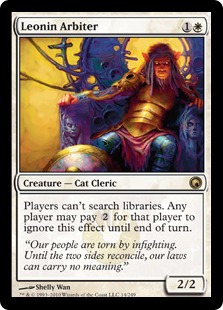 My original interest in UW Blink came out of a simple desire: to determine if Spell Queller was playable in Modern. I wanted to build a deck that worked to take full advantage of the strengths of Spell Queller without directly relying on the card in a “build-around-me” sense. With this in mind, I chose to build a UW Tempo/Flash style archetype that could use Spell Queller as a reactive source of disruption just as easily as it could use it as a simple 2/3 flyer for 3. Such an archetype would be interested primarily in dealing damage and creating inefficiencies for our opponent, either in their sequencing, mana, or post-board configuration.
My original interest in UW Blink came out of a simple desire: to determine if Spell Queller was playable in Modern. I wanted to build a deck that worked to take full advantage of the strengths of Spell Queller without directly relying on the card in a “build-around-me” sense. With this in mind, I chose to build a UW Tempo/Flash style archetype that could use Spell Queller as a reactive source of disruption just as easily as it could use it as a simple 2/3 flyer for 3. Such an archetype would be interested primarily in dealing damage and creating inefficiencies for our opponent, either in their sequencing, mana, or post-board configuration.
I chose to start with a base two-color build to determine if the core (blue-white at this point, the two colors that we need to cast Spell Queller) contained enough power to compete in the format without relying on complicated synergies. Instead of a Taxes approach that uses cards like Leonin Arbiter and Thalia, Guardian of Thraben, I chose to focus instead on a strong engine of spells that are individually powerful on rate alone, yet have synergistic value when paired together.
Calling back to my Colors of Modern series, I knew that the power of blue and white lies primarily in their spells, and not their creatures. Leonin Arbiter and Aven Mindcensor have synergy with Path to Exile and Ghost Quarter, but I’d rather pass on the situational creatures and just play good spells. This clashes slightly with Spell Queller and my desire to be aggressive, which necessitates attacking with creatures. Luckily, blue and white offer enough strong creatures that a mix can be achieved without dipping into sub-par options.
Once I dodged the poor creatures trap so many others fell into, my next goal was to ensure the reactive elements of my deck played along nicely with the aggressive half. Spell Queller rides that line nicely thanks to flash, which allows me to disrupt if necessary and deploy threats if our opponent refuses to play along. You can probably guess where this is going, so the second card that made the cut became Snapcaster Mage, and the third card became Aether Vial.
Snapcaster Mage wants spells. Aether Vial wants creatures. What the hell is wrong with you?
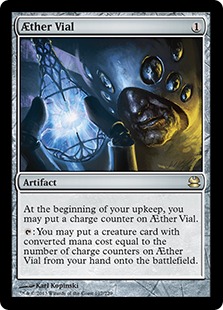 I’m not an Aether Vial deck. I’m not a Snapcaster Mage deck. I’m a reactive blue-white deck interested in playing good spells, disrupting my opponent and getting in damage when possible. Aether Vial lets me deploy threats without spending mana, and allows for Flickerwisp/Spell Queller tricks faster. Snapcaster Mage lets me get more mileage out of Path to Exile, Serum Visions, and sideboard spells, and I cast it as Ambush Viper just as often as I hold it for value.
I’m not an Aether Vial deck. I’m not a Snapcaster Mage deck. I’m a reactive blue-white deck interested in playing good spells, disrupting my opponent and getting in damage when possible. Aether Vial lets me deploy threats without spending mana, and allows for Flickerwisp/Spell Queller tricks faster. Snapcaster Mage lets me get more mileage out of Path to Exile, Serum Visions, and sideboard spells, and I cast it as Ambush Viper just as often as I hold it for value.
While not necessary, playing counterspells alongside Spell Queller does make our Spell Queller better, as we’re more likely to be able to keep whatever it takes exiled. Remember my earlier point about making the opponent play my game? If I can push my opponent into a post-board configuration where they are diluting their threat-base by bringing in (or keeping in) removal for my creatures, they play right into my threat-dense, efficient-answer strategy. When you can craft the gamestate to a point where your opponent is running removal headfirst into Flickerwisp and Restoration Angel, you’ve won not only the game, but the moral victory of really pissing off your opponent. Tricks are fun, and there’s nothing better than this play:
Opponent: Cast Terminate on Spell Queller holding a Liliana of the Veil.
Us: Vial in Flickerwisp to blink Spell Queller (exiling Terminate but releasing the Liliana).
Opponent: Attempt to cast Liliana of the Veil again, for free.
Us: Flash in second Spell Queller to eat Liliana of the Veil again.
Opponent: Flip Table.
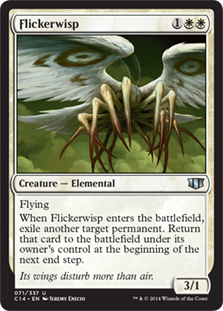 While all these tricks are nice, plan A is kill our opponent, and flashy 3/x flyers are great for racing and making math hard. Alongside Wall of Omens clogging up the ground, even a Flickerwisp plus a Spell Queller is a four-turn clock, and can be very dangerous backed up by tricks and protection. I’ve found that in the early turns we might look to our opponent like a do-nothing Wall of Omens durdle deck that they can just deploy threats against at ease. By the time they realize they need to kill our flying creatures quickly, we’re already in a position to blink away their removal (or have just drawn into more threats with Wall) and threatening to win the game in a few turns.
While all these tricks are nice, plan A is kill our opponent, and flashy 3/x flyers are great for racing and making math hard. Alongside Wall of Omens clogging up the ground, even a Flickerwisp plus a Spell Queller is a four-turn clock, and can be very dangerous backed up by tricks and protection. I’ve found that in the early turns we might look to our opponent like a do-nothing Wall of Omens durdle deck that they can just deploy threats against at ease. By the time they realize they need to kill our flying creatures quickly, we’re already in a position to blink away their removal (or have just drawn into more threats with Wall) and threatening to win the game in a few turns.
As hardly anyone is playing flying in Modern anymore, our opponents are torn between trying to kill our flyers or blow up our Wall of Omens to race on the ground. Unfortunately for them, both of those options are horrible against our entire deck. Really, any player with experience playing Flickerwisp knows how awesome it is to put our opponent in a position to run right into our Flickerwisp with their removal, and Spell Queller does just that. I’ve never felt so in control over the pace of a game (with a deck filled with 20+ creatures, no less!) than I have playing this list.
Matchups at a Glance
While I intend on soon writing a dedicated primer for the archetype analyzing matchups across the board, for now I just wanted to make a few points that might not be immediately apparent when looking at the list.
First up is the fact that Wall of Omens blanks a large percentage of the format. Most decks in Modern simply have a bunch of trouble with an 0/4. Death's Shadow Zoo needs a Mutagenic Growth or combo pieces just to get through. Burn’s best case scenario involves Searing Blaze, when they would much rather be playing an Eidolon of the Great Revel or another threat on turn two. Merfolk needs a large board to get to 4/4 and above, and while they do have islandwalk, we actually don’t play many islands at all. Just blocking a Matter Reshaper or Eldrazi Displacer lets us focus our Flickerwisp and other tricks on slowing down Reality Smasher and racing in the air. In every matchup so far, Wall of Omens has either been solidly great, or has overperformed immensely.
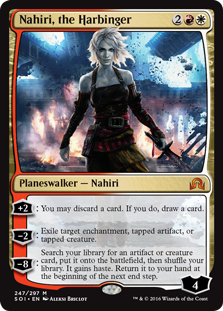 I spent most of this article talking about removal-light decks, but kind of skated over grindy decks like Jund Midrange and Jeskai Control. I wasn’t dodging these bad matchups in the hopes that you wouldn’t notice---in fact, these matchups are so good that I’m actively excited every time my opponent goes Overgrown Tomb, Inquisition of Kozilek. So far, I’m 4-0 against Jund, and 8-1 in games in those matches.
I spent most of this article talking about removal-light decks, but kind of skated over grindy decks like Jund Midrange and Jeskai Control. I wasn’t dodging these bad matchups in the hopes that you wouldn’t notice---in fact, these matchups are so good that I’m actively excited every time my opponent goes Overgrown Tomb, Inquisition of Kozilek. So far, I’m 4-0 against Jund, and 8-1 in games in those matches.
Wall of Omens stops their early aggression and gives us Liliana of the Veil protection, and if we get to blink it even once we’re pulling ahead. With Snapcaster Mage flashing back Path to Exile and Condemn, and extra Ancestral Visions out of the board, we have access to a lot of card advantage to fight through their disruption. Blinking out of the way of a Lightning Bolt doesn’t sound game-breaking, but every match against Jund I’ve looked across the table in the midgame to find them with three cards in hand while we still have a full grip. If you want to beat Jund, badly, this is the deck for you.
Jeskai Nahiri is, somehow, even easier. They have few ways to apply pressure outside of Nahiri, the Harbinger, which gives us more than enough time to grind them out. Wall of Omens is, again, way better than how it should be against a deck with few attacking creatures. Most of the time Jeskai is letting Wall of Omens resolve, which gives us a free card to replace it. With Aether Vial, we then just have to flash in a Flickerwisp to net another card, unless they choose to Path to Exile our Wall (which has yet to happen, as they now have a Flickerwisp to worry about). Our gameplan becomes “blink Wall as much as possible” while our opponent starts to fall further and further behind.
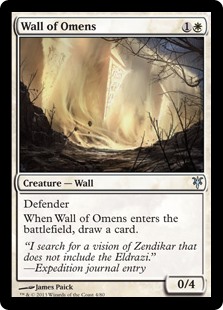 Really, their only way to catch up is with an unanswered Nahiri or a bunch of Snapcaster Mage value, which is why I actually am considering Rest in Peace for the matchup. Usually, Rest in Peace is a poor option against a card advantage archetype like Jeskai, but when Snapcaster Mage is literally their only option to keep up with us, it ends up being worth it. When you can fight through a turn one Ancestral Vision, you know there’s something here.
Really, their only way to catch up is with an unanswered Nahiri or a bunch of Snapcaster Mage value, which is why I actually am considering Rest in Peace for the matchup. Usually, Rest in Peace is a poor option against a card advantage archetype like Jeskai, but when Snapcaster Mage is literally their only option to keep up with us, it ends up being worth it. When you can fight through a turn one Ancestral Vision, you know there’s something here.
Finally, I’d like to talk a bit about Burn. Burn has been pretty underrepresented online (for a few reasons) which has allowed bad matchups like Death's Shadow Zoo to flourish. We’re at a point now where players are starting to pick Burn back up, and this deck crushes Burn.
We might seem a little too slow and durdly to claim a good matchup, but you have to look at what our cards do here, especially Spell Queller. Kitchen Finks gains life, and we have eight ways to blink it. We take barely any damage from our lands. Ojutai's Command is a powerhouse. Spell Queller might look poor against a deck full of damage-based removal, but once you see that it’s at worse a three-mana “gain 3” its value becomes apparent. I’ve even cast Condemn on my own Restoration Angel to gain four in a pinch. I have yet to lose against Burn.
Looking Ahead
The above list is only a first draft of what I’m convinced will eventually become a steadfast archetype in Modern. It might end up looking nothing like the above list, but I can confidently say that Spell Queller will make an impact of some sort in the metagame. If Spell Queller is good, then it follows that Tidehollow Sculler is good as well. It’s possible that the archetype might grow to involve black, which will give us Sculler, discard, and possibly a few other options.
The Eldrazi Displacer has overperformed for me every time I’ve cast it, but I don’t intend on adding Eldrazi Temple anytime soon. Ojutai's Command is probably the worst card in the list currently, but returning Wall of Omens and countering a Thought-Knot Seer just feels so good. I could see myself moving away from Snapcaster Mage and adding in more creatures and Thalia, Guardian of Thraben, but I’ve been enjoying navigating the complicated lines that this style of the archetype presents.
Adding green for Tarmogoyf would give us a hard-hitting two-drop to push the tempo aspects of the archetype, and tutoring up Spell Queller with the hot Traverse the Ulvenwald sounds pretty fun as well. For now, I’m sticking to blue-white, but my eyes and ears are open.
If you’re interested in learning more about the deck, stop by my stream and join in on the discussion. Possibly I’ll give a more in-depth primer next week when I’ve hopefully finalized the list and have some more data to analyze. Thanks for reading, and good luck!
Trevor Holmes
The_Architect on MTGO
Twitch.tv/Architect_Gaming
Twitter.com/7he4rchitect





While I agree that queller could be quite good in modern, your list of decks with <5 removal is a bit dubious:
Dredge (0+2): almost all lists have some number of main deck conflagrate
Tron (0-4): so I guess karn, o-stone, ugin, and ulamog can't kill spell queller? Also keep in mind you can't quell the big stuff.
Ad nauseum (0): they almost always have slaughter pact main or side.
living end (0): They almost always play things like beast within and shriekmaw, also dismember is a possibility (since it has cmc=3). Also, deadshot minotaur can kill the queller funnily enough.
Abzan company(1+2): sure they have few answers but keep in mind they have four chords to tutor them (and you generally can't quell chord)
Patrick,
You make good points, and I should have elaborated on my process in filteringremoval spells that hit Queller. For example, in Tron I chose not to inlcude Karn/Ugin/Ulamog, since we’re usually losing if they’re casting those spells anyways. I’m not familiar with the Dredge matchup, but I can’t imagine them often investing a Conflagrate into killing a Spell Queller which is usually only holding a Faithless Looting, as they don’t even cast many spells in that matchup besides Looting and Life from the Loam anyways.
A couple of the others are misses though, it’s not fair to say Ad Nauseam and Living End have “0” when they definitely don’t. Thanks for keeping me honest!
Trevor
Spell Queller has been having a good week. 2 ModernNexus features before Friday is a strong showing. I have to say that I like the concept of this list – UW Blink is an archetype that I think should see more play than it does, and this list showcases some of its strengths. I would have liked to see something like Reflector Mage in the 75 in addition to the Queller (frees it up to go after noncreature spells) because of its delicious synergy with Æther Vial, but I need to crunch some numbers to see if the curve allows for it. I’m in agreement that Ojutai’s Command feels like the weakest card in the list, and you may need something a bit faster to replace it (also gives Snapcaster Mage more targets).
It’s actually been in 3 of the articles posted this week. Queller showed up in the Merfolk list from 2 days ago AND the rainbow aggro list from Monday.
That 2/3 body makes it seem really underwhelming, but I can’t really argue with results….
Roland,
A lot of people have been suggesting Reflector Mage, and it’s possible I might add it. I haven’t often felt the need to bounce a creature, not when Wall of Omens is on the field, and the three slot is a little crowded with Displacer/Finks/Clique all vying for the “third spot”.
It’s possible the counters get moved around to fit some more creatures in the maindeck, and in that case I’ll definitely be looking at Mage more closely.
Thanks!
Trevor
Amalgam Dredge’s impending tyranny as it migrates from MTGO… Wafo-Tapa’s Esper Control that’s about to sucker-punch an unsuspecting format… Now this deck is “breaking the format”…
If recent Modern Nexus articles are to be believed, every new/reinvigorated deck that 5-0s a couple of MTGO Leagues is the next big thing… all of them simultaneously? So, what happens when all of these unstoppable forces meet in a tournament? Do we get some kind of universe-ending paradox from forcing two unstoppable decks against each other?
Or maybe Modern Nexus is just getting a little more “hype-y” these days, and these decks are all merely solid?
I admit we probably came on a little too strong in those articles. I’m still getting a sense as the editor of what tone to strike and when to pare back the authors’ claims, and your feedback helps.
As for Dredge, the data pretty clearly show an ascendant archetype. If MTGO data is mirrored in paper it will be Tier 1 next month. That said, I definitely don’t think it’s the “only” deck or “broken” or something, which was hopefully reflected in my discussion.
Jacob,
Maybe I should have titled the article instead “3000 words on a deck I brewed a week ago that I’ve done pretty well with”
I understand your point, but I can’t help but throw a little Kappa in there. There’s a fine line between an interest-generating title and clickbait, and I don’t think we’ve crossed that. Wafo has indeed been crushing online with Esper, Dredge has more than proved it’s a major player in Modern, and based on my (given, limited) experience with this deck I believe there is something here that will stick around for a long time. Such is the way of discovering new technology, nobody questions articles titled “The Bant Company Menace” because it’s proven itself for weeks.
Thanks for the feedback!
Trevor
Have you considered any anthem effects? Like, Favorable Winds or Honor of the Pure? It bolt-proofs Spell Queller, and if you think you see blowouts now, wait til somebody tries to double bolt it, and you flicker it on the second bolt, wasting two cards. It also makes Resto so big that it can block goyfs and Siege Rhinos effortlessly. It does clutter up the two drop slot though, which is my one big concern.
Leander,
Anthems (in my opinion) fall under the category of synergistic cards that are bad are on their own. The list is tight as is, and I would much rather have a two drop like Thalia or more three drops/interaction than something that only helps my favorable board position already.
Thanks,
Trevor
people that complain that queller ‘dies to bolt’ don’t understand what ‘tempo’ means. Even dying to bolt, stoping their 2 drop on the play, so they need to bolt it in turn 3 (and can’t cast a drop 3) is what ‘tempo’ means.
Obviously, casting it blindly without considering the consequence is bad play, and you don’t rate a card based on bad plays, but on when it perform bad even as a good play.
BTW.: Ancestral Vision can’t be snap’ed.
The mention of Ancestral Vision next to Snapcaster was just supposed to explain how both generate card advantage independently. The text has been updated to clarify that.
Is Ojutai’s Command really better than Cryptic Command? If so, in which way? Is it only a matter of casting cost? Or the modes are really more relevant in this deck?
Mikefon,
Cryptic Command is definitely the more abstractly powerful card, but there are a few reasons why I like Ojutai’s better here (though keep in mind that it is probably the weakest card in the deck and on the chopping block).
Against decks interested in attacking (read: most) returning a Wall of Omens after they’ve killed it and started hitting finally can set them back even further, and gives us more than just the “draw a card” value that Cryptic Command can. Getting our wall back so we can continue to block and blink it adds up to more than a card and some amount of life over the course of a game.
Access to four life at instant speed can really make racing math hard for our opponent and get us out of tight situations, and we often end up in racing situations because our opponent can’t interact with our fliers. Also, when it’s “dead” we can grab a Wall of Omens and cycle for two cards, which Cryptic cannot do.
Finally, triple blue is not “hard” in the sense that we are a two color deck, but without it in our list I’m able to prioritize white and fetch basic plains without any fear of cards getting stranded in hand. Minor, but a real point still.
Thanks,
Trevor
while there has certainly been a lot of hype in recent articles, the raw percentages dredge and death’s shadow are putting up on MTGO make them worth having a nice, long chat about.
The wafo-tapa deck certainly does not have the metagame percentages, but Guillame wafo-tapa is a hall of fame player, known for developing very powerful draw-go archetypes in unknown formats. He has posted 8 5-0 performances with very little variation in lists (usually only a few slots in the mainboard from league to league) in the last 35 days. Not every 5-0 finish is posted, so to have eight reported 5-0 finishes (basically one every four days) indicates that he is likely actually tearing through the field. This is notable the same way that frank karsten performing well with affinity in a metagame mostly hostile to it, or John Finkel piloting storm in modern is notable–surprising in that the deck isn’t necessarily well positioned or inherently strong, but the pilot is extremely skilled. What makes this notable is that two OTHER players have posted 5-0 finishes in the last week or two using almost identical lists. This in and of itself is enough to show that the deck is in fact actually a viable contender.
Dredge and Draw-go control are also worth talking about just from the fact that, as archetypes, they are previously unrepresented in the competitive tiers of modern, but have a strong competitive history in previous “large” formats (dredge in legacy, draw-go in old extended)–they can indicate modern trending (slowly) towards a more stable equilibrium state similar to legacy, with multiple archetypes represented in a checks-and-balances type of arrangement, even if color diversity is nonexistent or very skewed.
In my experience Spell Queller is just too slow for the modern format, burn, infect, suicide zoo and affinity easily go under Spell Queller, even more so if you’re on the draw, and you will often be put in situations where you want to hold up Spell Queller but your opponent is smart enough to not cast anything relevant into open mana when he already has pressure on board. It is unfortunate that the Vials are needed to make Flickerwisp good, because the rest of the deck does not really need it with all the flash creatures and instants, I guess it is nice to play around counters and pick up tempo.
Tron does not really care about Queller except for O-Stone, and they have 0-4 ways of killing him? More like 9-12+ ways in Karn, Ulamog, Ugin, O-Stone, Bolt or Firespout, not to mention that half of those can’t be exiled.
Jund has a ton of removal to handle Queller, and if in the example provided, the opponent has abrupt decay instead of terminate, then the dispel in your hand will not save you. I don’t think a 3 drop counter can be reliably good here when he dies to any of the million 1-3 drop removal spells they run.
And the other Jund example provided was a bit off, if you Flickerwisp the Spell Queller targetted by terminate then the terminate will fizzle instead of getting exiled. You basically wasted a Flickerwisp if you then proceed to exile the LOtV with another Spell Queller, instead of just exiling Terminate right off the bat.
Oh and Ancestral Vision can’t be Snapcastered, that would be OP ^^;
The mention of Ancestral Vision next to Snapcaster was just supposed to explain how both generate card advantage independently. The text has been updated to clarify that.
Ricardo,
I can agree with you that against Suicide Zoo and Infect Spell Queller isn’t the best, but I have to disagree in how it plays against Burn and Jund. Most of my article contained Jund references and stats to my performance in that matchup, so I won’t really talk about that more other than saying so far, my Jund matchup feels awesome and the results back it up.
I also talked about Burn, and what Spell Queller does to that matchup. Sure, sometimes they blow right through us, but in my experience stabilizing at around 5 life with a Spell Queller in hand is much “safer” than with any other archetype. Putting them on three spells (one the Queller eats, one to kill the Queller and release it, and another to kill) is often game over if we have any amount of pressure. Kitchen Finks and Ojutai’s Command help us to “trade” with our opponent’s cards and get us to that point where they are topdecking and we still have life left to play with.
Thanks for the comments!
Trevor
Trevor I appreciate the reply, and I actually think the deck is very well configured to both complement Spell Quellers weaknesses with some early cheap counters/wall of omens/removal and then take advantage of it’s strength once in the midrange portion of the game.
Might I ask why you have included 3 Serum Visions? Is it solely to have other turn 1 plays other than vials and path? I feel like you should be favoured in most grindy matches but will be struggling mostly against linear decks in suicide zoo / affinity / infect / elves / and the like, so have you considered maindecking for example a number of condemn’s for the early interaction freeing up a SB slot or 2, possibly going up to 2 Engineered Explosives SB?
Didn’t realize you can’t edit your comments here. Just wanted to add that condemn might not be the right card for the suggested MD slot, I feel there ought to exist better options for this deck other than Serum Visions though.
Hey Trevor,
I was the guy on your stream taking the deck to the local modern tournament that evening. Ended up going 3-1 eating a loss to Affinity, which does not feel like the best match.
We came to the same conclusion about Displacer. Card was not only good but shut down things like etched champion hard.
Infect was also not great on thier decent draw, though manged to scrape out two games on the back of thier bad ones.
I’m on the fence about the Vials and the Wisps (mostly because without Vial the card is pretty mediocre). I was also running Cryptic over Command, as an old Eternal Command player it’s hard to see Vial and Snapcaster and not jam Cryptic into the deck.
Either way, this is a solid backbone and I agree, Queller is the real deal.
Curtis,
Glad to hear you did well with the deck! Infect does seem like an area where we can use a bit more help, I’ve been considering splashing black to cast EE for three and doing so would give us access to Lingering Souls/discard if we desired. I don’t think I’m there yet, as the matchup can be winnable without adding the third color, but I am keeping it in mind.
Keep testing and let me know how you do!
Trevor
I absolutely love this concept, and have been trying both your take and a more vial-based list heavier on creatures. In both (as you’ve already noted), Displacer was putting in work. With your land base, however, I was having some consistency issues having colorless mana for activations every time I drew it. Have you considered Nimbus Maze as a replacement for the Glacial Fortresses? In about ten games I have yet to get screwed by the potential downside (which cards like Ghost Quarter and Spreading Seas aren’t likely to cause anyway), and it fills both the painless and the colorless slots. Maybe Glacial Fortress is more consistent, but I think the colorless ability’s worth investigating for Displacer.
I think a version without the vials, and flickerwisps but using essence flux as a cheaper flickerer (plus counter on quellers to take it out of bolt’s range) may work. Also, the interaction between meddling mage and queller seems tempting.